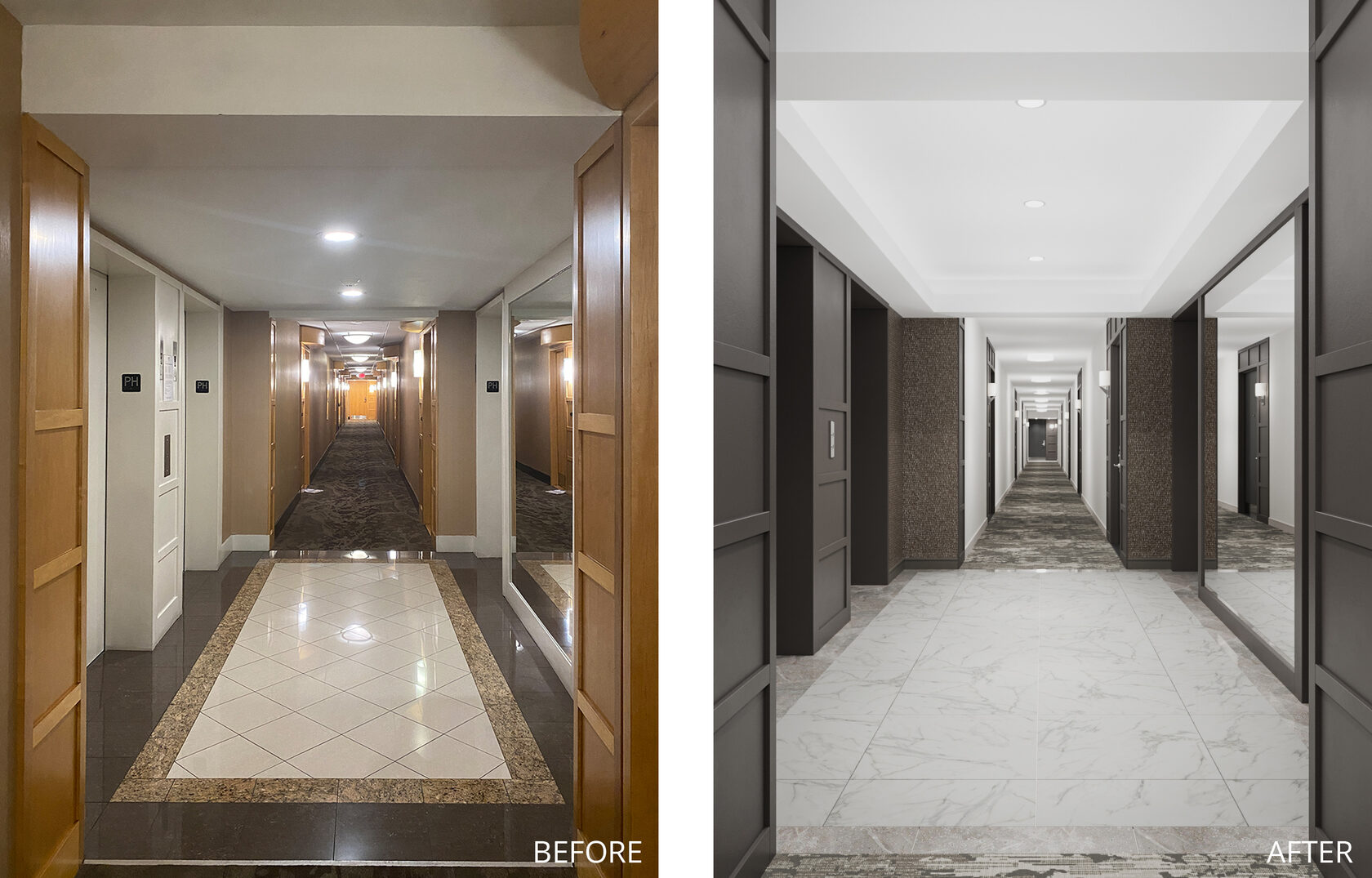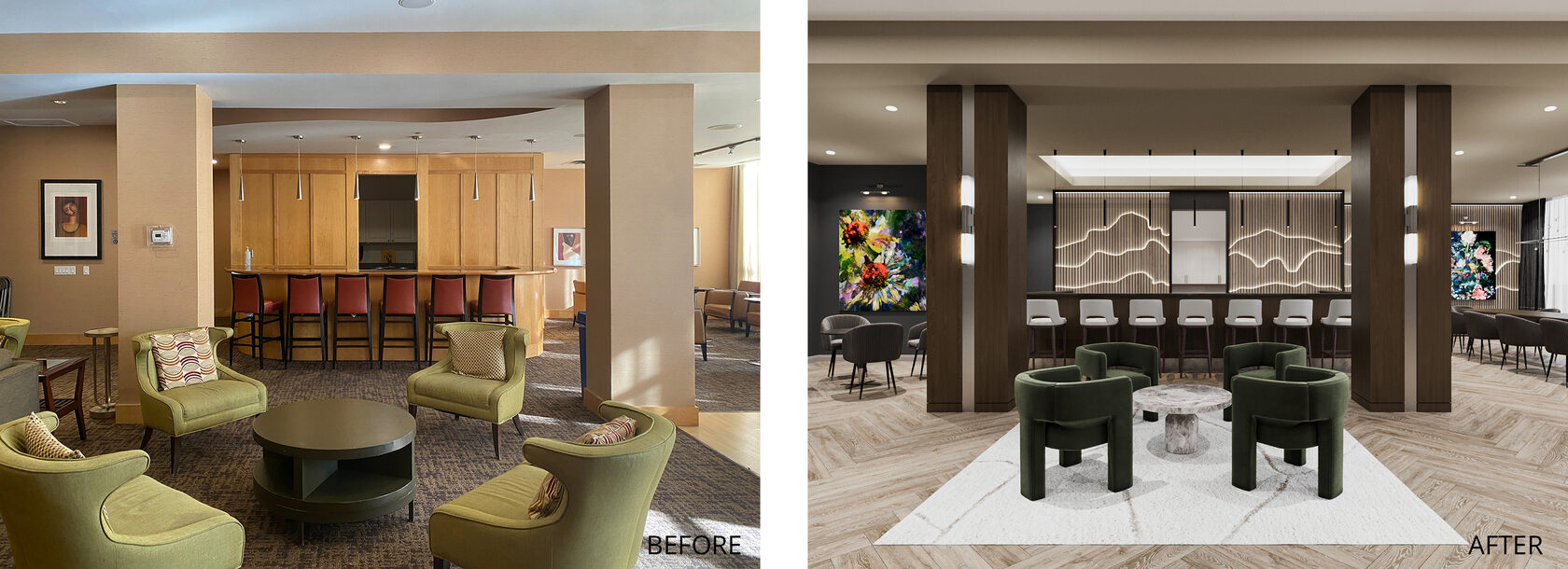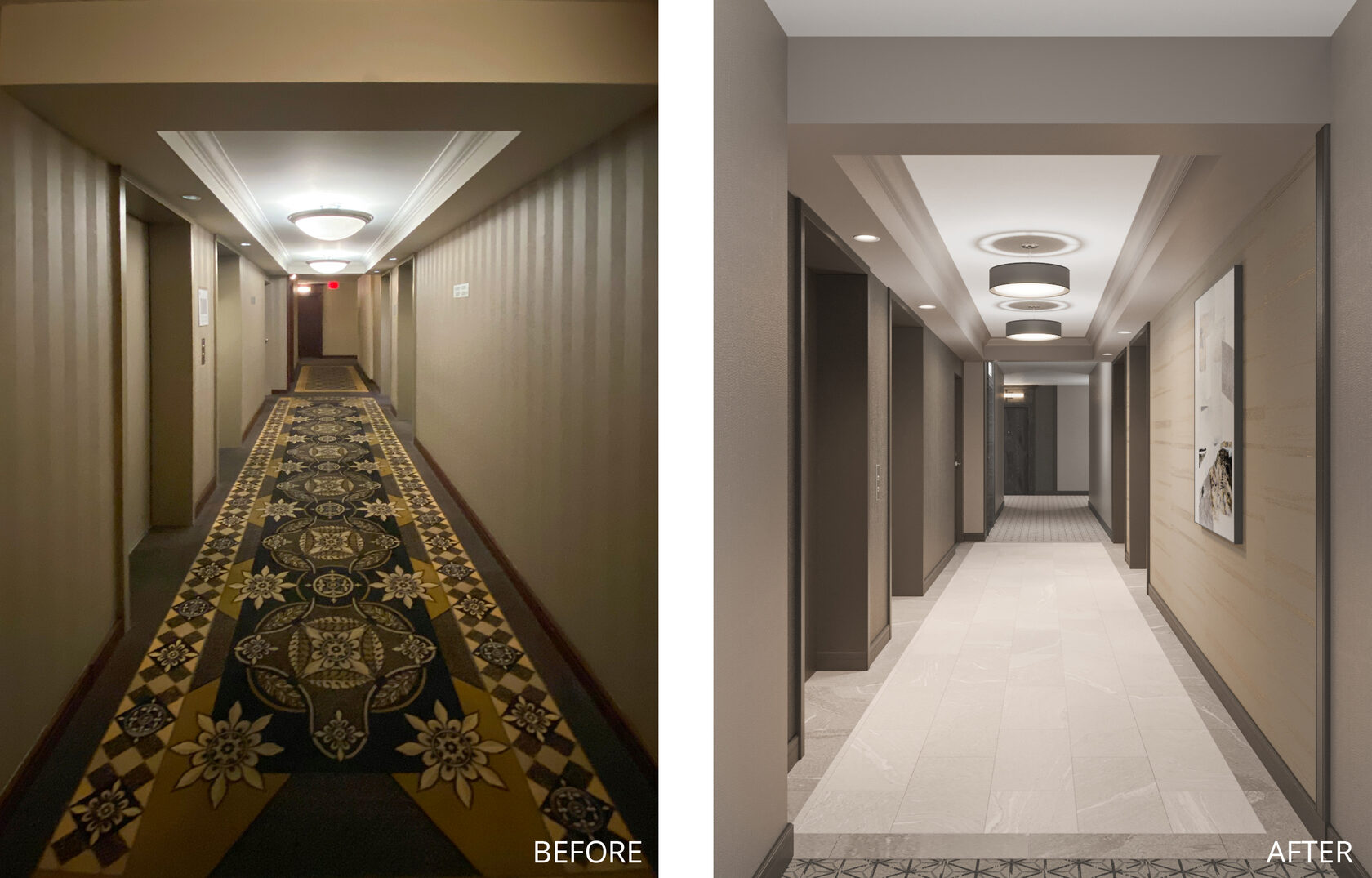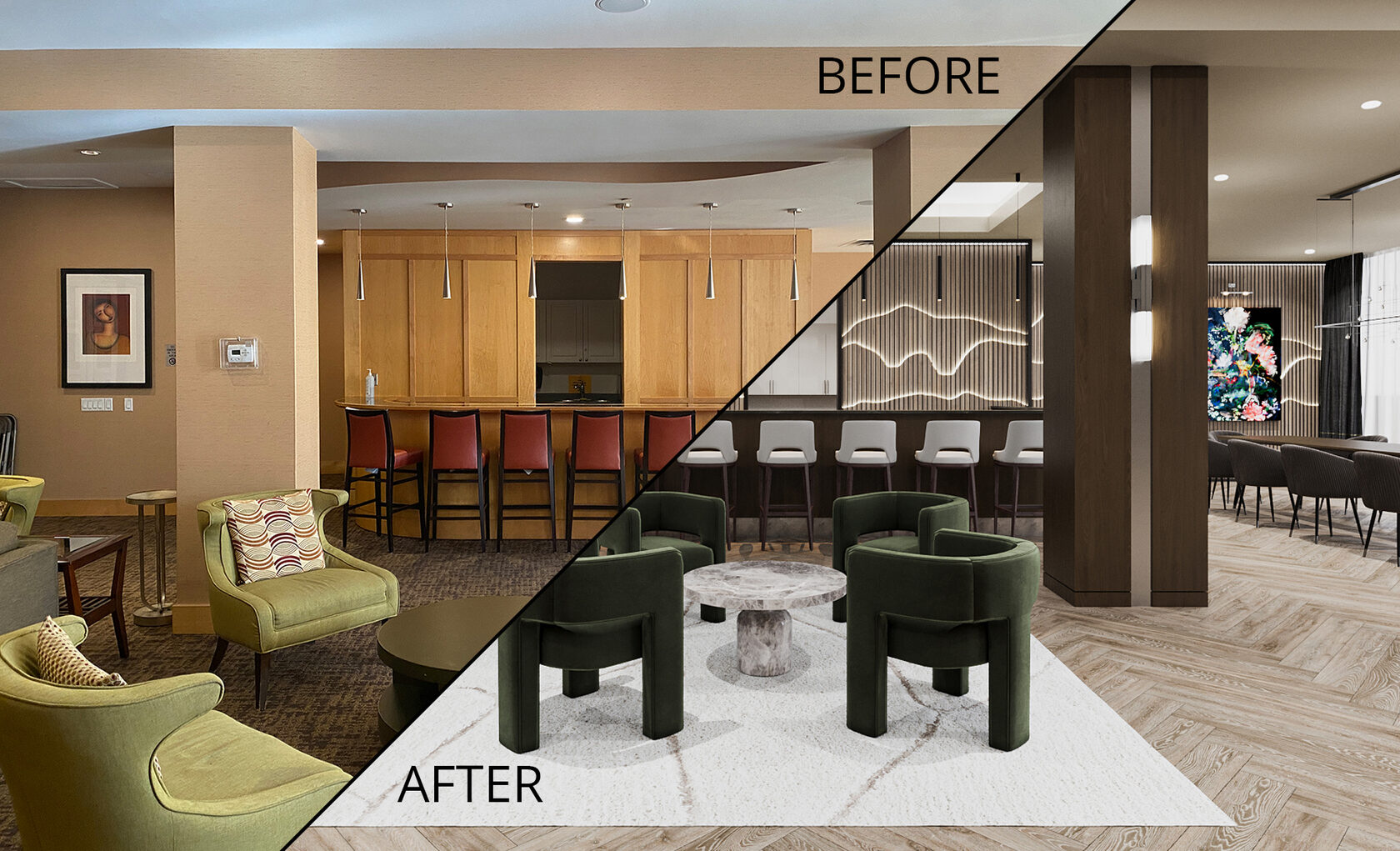An Ideal Designer Is Innovative And Receptive To New Approaches In Tackling Design Obstacles
Article for CCI Toronto magazine (Volume 25, 2020)
Condominium interior refurbishment is a complex undertaking filled with challenges that may seem daunting to the Board of Directors. It is important then to select the right professionals, such as an experienced designer, to oversee and execute such a major project.

A designer will act as the owners' representative throughout the refurbishment process. They will look after the interests of the condominium corporation with the end goals of designing common elements that are fit for purpose, increasing property values, and satisfying residents.
Before hiring your star designer, two key steps need to be taken. The first is to review your reserve fund study, and the second is to establish a preliminary scope of work.
Assessing the Reserve Fund Study and Preliminary Scope of Work
A reserve fund study details the estimated costs of major repairs and replacement of common elements. It looks at the life cycle of these elements and sets basic timelines in which these are to be maintained. In essence, the study establishes the when, what, and how of refurbishment projects.
Developing a scope of work, however, requires more than just an assessment of the reserve fund study. Arriving at an accurate and concrete plan for refurbishment requires an examination over and above the study's findings. This is where an experienced designer comes in. Important factors that are typically not accounted for in the study but that a quality designer will evaluate are:
- Stakeholders and their expextations
- Present site conditions
- Current real estate market trends
- Up-to-date material costs
- Changing building demographics
- Actual versus intended use of common elements
- Support staff input
After an initial inspection of the existing site conditions and prior to the first presentation to the board, a designer may make a preliminary list of recommendations to a scope of work.
Choosing your designer
The process of choosing your designer begins with a Request for Proposal (RFP) that is typically sent out to three design firms. An RFP sets clear parameters of deliverables and a criteria for evaluation. The proposal should include the designer's breakdown of fees and their project schedule. Your Property Management company may already have an RFP format that can be utilized for this purpose.

After the submission and review of the RFP, the designers will meet with the board to present their vision and advocate why they are the right candidates for the job. The most suitable designer should specialize in the condominium refurbishment industry and be acutely aware of the process of refurbishment from start to finish. A competent designer needs to have knowledge of materials and construction practices and a solid understanding of return on investment. They should have an educational background in the field of design along with a portfolio of work highlighting proof of successfully completed projects.
The ideal designer will be innovative and receptive to new approaches in tackling design obstacles. They will turn often detailed, conceptual plans into reality and be deliberate in articulating a purpose behind all their recommendations. Your designer should be diplomatic and capable of accommodating a mix of competing priorities and personalities.
The design process
Depending on the scale of refurbishment, the design process will typically take 2-6 months to complete. It is in this stage that your designer will create and present designs using a combination of technical drawings, rendered images, and material samples. Your designer may also submit questionnaires to the board in order to further define parameters such as the aesthetic and functional requirements of elements. This will help narrow down the selection of materials and large-expenditure items such as flooring. During this period, a clear project scope is defined and design elements are fully developed.
At this point, your designer will be able to distill all necessary information to obtain costing for the project and to prequalify the general contractors. This is done through a formal tender or a design build approach. Your designer should provide you with a clear and concise breakdown of all the design elements so that you can make a decision on the final allocation of funds.

After two design option packages are finalized, your designer will present each one to the residents at a meeting. This meeting provides an environment to answer any questions and concerns the residents may have. Common pitfalls you will encounter usually involve skepticism and requests to deviate from the two design options presented. Your designer should be prepared to educate the residents on design methods and provide sufficient technical information, in plain language, about materials and products. They should also be able to defend these selections and field off non-constructive remarks to generate a consensus and move the project forward.
A tip from years of experience presenting at residents' meetings: every community is different, but a smart approach is to provide two significantly different options that strategically address distinct segments of the building's residents.
Construction Administration and Project Closeout
As your representative, the designer needs to keep up to date with the progress of the refurbishment project from start to finish. They need to periodically visit the site to review its conditions and solve any issues during construction. Your designer should be knowledgeable and technically adept enough to collaborate effectively with the construction team. As your eyes and ears, the designer should be immersed in every step of the process, from keeping up with the construction schedule to reviewing and approving progress payments issued by the general contractor.
A successful design is not only aesthetically pleasing and technically apt but also improves the community, preserves investment value, and maintains the condominium's competitive advantage in the marketplace. Such forward-thinking solutions and a practical streamlined approach to reach these goals are the value of having a capable designer on your team.
